The lifespan of a dolphin depends on its species and habitat, but most dolphins tend to live between 30 and 50 years in the wild. However, dolphins kept in captivity have lived fewer lifespans of between 15 and 30 years.
Many factors can influence a dolphin’s life expectancy, such as their health and nutrition, water quality, and how much shelter they have from predators. Dolphins also face threats due to human activities, such as fishing nets or pollution, which can reduce their life span.
In this article, I will discuss each factor, including the life cycle of dolphins. So read on to discover all the new information about the life of dolphins.
How Long Do Dolphins Live? (Wild And Captivity)
Dolphins have varying life expectancies depending on their species and whether they are in the wild or in captivity. Generally, female dolphins tend to live longer than males.
Dolphins’ Lifespan in Wild
Dolphins have a relatively long lifespan in the wild compared to other animals. Orcas, for example, can live up to 90 years, while striped dolphins can live up to 60 years.
Short-finned pilot whales have an average lifespan of 45 years, and pantropical spotted dolphins have an average lifespan of 40 years. Bottlenose dolphins have a lifespan of 30-50 years, while spinner dolphins have a shorter lifespan of about 20 years.
These are just averages; some dolphins may live shorter or longer lives. Additionally, the lifespan of wild dolphins may be affected by factors such as food availability, climate change, and human activities such as pollution and hunting.
Dolphins’ Lifespan in Captivity
Dolphins generally live shorter in captivity than in the wild. Notably, captive dolphins captured from the wild have a longer survival rate compared to those born into captivity. A significant proportion of bottlenose dolphins (52.26%) born in captivity die before they turn one year old, which is more frequent than in their natural habitat.
Why Do Dolphins Have a Lower Lifespan In Captivity?
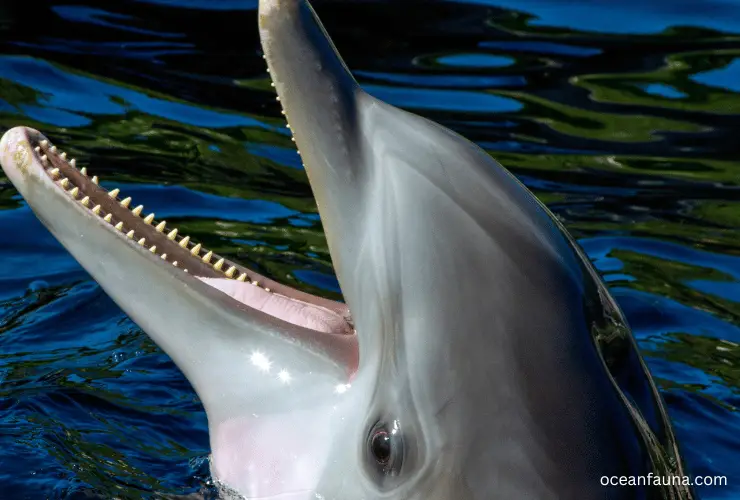
Dolphins in captivity face a number of challenges that can lead to a reduced lifespan compared to those in the wild.
One major factor is their diet, which consists of previously frozen dead fish. This diet is not only lacking in the variety and nutrients that wild dolphins would have access to, but the freezing process can also degrade the quality of the fish and lead to a higher risk of bacterial infections.
Additionally, the stress and boredom of captivity can contribute to a weakened immune system, making dolphins more susceptible to infections and illnesses. Even with preventative doses of antibiotics, dolphins may be unable to fight off these infections and can quickly become overwhelmed.
Furthermore, captivity often means a lack of space to swim and explore, leading to physical health issues such as muscle wastage and joint problems.
Inadequate water quality can also negatively impact dolphins’ health, as they constantly swim in their waste and are exposed to harmful chemicals.
However, recent animal care and technology advancements have significantly increased dolphin survival rates and life expectancies in zoos and aquariums. According to research, dolphins in U.S. zoos and aquariums today live as long or longer than dolphins in the wild, with an average lifespan of about 28-29 years.
This is a significant improvement from the past, when dolphins in captivity often suffered from poor living conditions, including small tanks and inadequate medical care. For example, in the 1960s and 70s, bottlenose dolphins in captivity typically lived for less than five years.
One reason for the improved lifespan of dolphins in captivity is the increased focus on animal welfare and enrichment. Zoos and aquariums now provide larger tanks, better diets, and more opportunities for socialization and play.
Additionally, advances in veterinary care and medicine have helped improve the health of captive dolphins.
What Is the Longest-Living Dolphin Specie?
The orca, also known as the killer whale, is the longest-living dolphin species. Orcas are one of the top predators in the ocean and are found in all the world’s oceans, from the Arctic to the Antarctic.
They have a 50-90 year lifespan, but females may live for more than 90 years. This makes them the longest-living species of all dolphins.
Here is a list of some dolphin species and their lifespans.
| Dolphin Species | Lifespan Range | Average Lifespan |
| Bottlenose Dolphin | 40 – 50 years | Around 45 years |
| Common Dolphin | 20 – 25 years | Around 22 years |
| Spinner Dolphin | 20 – 25 years | Around 23 years |
| Orca (Killer Whale) | 50 – 90 years | Around 60 years |
| Risso’s Dolphin | 30 – 40 years | Around 35 years |
| Short-Beaked Common Dolphin | 15 – 20 years | Around 18 years |
| Atlantic Spotted Dolphin | 30 – 50 years | Around 40 years |
| Dusky Dolphin | 20 – 25 years | Around 22 years |
| Hector’s Dolphin | 15 – 20 years | Around 17 years |
| Fraser’s Dolphin | 15 – 20 years | Around 18 years |
| Commerson’s Dolphin | 15 – 20 years | Around 18 years |
| Amazon River Dolphin | 10 – 30 years | Around 15 years |
| Irrawaddy Dolphin | 30 – 35 years | Around 33 years |
| Indus River Dolphin | 20 – 25 years | Around 22 years |
Orcas are highly intelligent creatures and have complex social structures, with some populations staying together their entire lives.
They feed on fish, squids, and other marine mammals, including seals, sea lions, sharks, and even other dolphins. They are also known for their communication skills, which include an array of whistles, clicks, and vocalizations used to communicate with each other and locate prey.
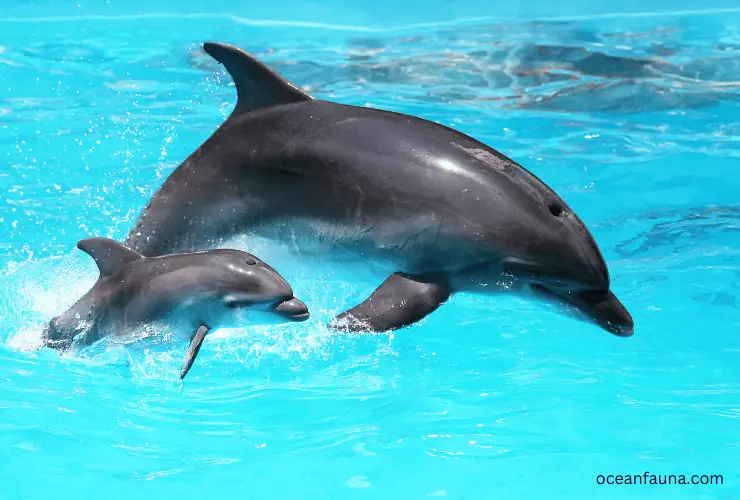
Interestingly, not all orca populations have the same lifespan. Some populations that reside in captivity, such as those found in marine parks and aquariums, have shorter lifespans due to the stresses of captivity.
In contrast, wild orca populations have longer lifespans because they are able to live in their natural environments, where they can fully utilize their hunting and social skills.
As you already know, orcas have a longer lifespan than other dolphin species. However, researchers studying dolphins in Sarasota Bay, Florida, have identified a bottlenose dolphin named Nicklo as the oldest known dolphin aside from orcas. Nicklo has been known to the research team since birth and was photographed in 2016 at the age of 66.
The Life Cycle of Dolphins
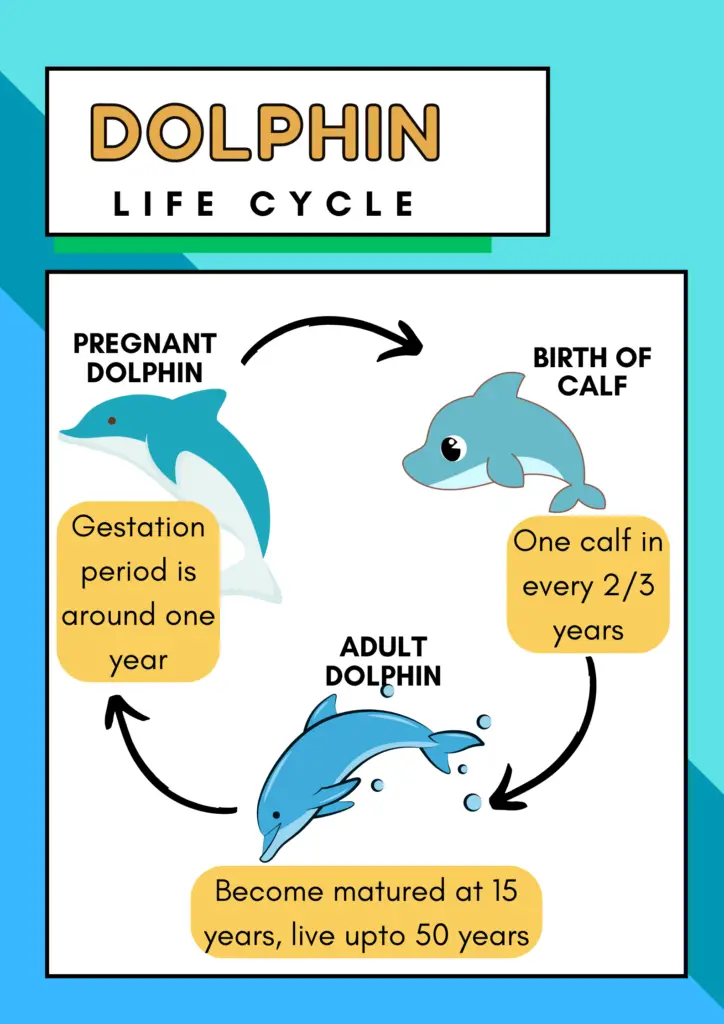
The life cycle of dolphins is divided into three main stages: birth, growth, and death.
Birth
During the birth stage, a female dolphin carries her developing young, known as a calf, for a period ranging from nine to seventeen months, depending on the species. When the calf is born, it is around 3-4 feet long and weighs between 30-40 pounds.
Growth
The growth stage of the dolphin life cycle happens after birth. The calf receives nutrient-rich milk from its mother, which is vital to its growth and development. The baby dolphin learns survival techniques such as swimming, socializing, and communication.
During this stage, the growth rate of the dolphin is high, as it can grow up to 3-4 feet per year, depending on the species.
The sexual maturity of dolphins varies greatly across different species. Most delphinids reach sexual maturity by around 15 years of age, and some species can mature as early as ten years.
However, bottlenose dolphins are known to mature later than other species. They become sexually mature around the age of 15 years.
Death
In the final stage of the dolphin life cycle, death occurs. Most dolphins have a lifespan of 30-50 years, depending on the species.
Factors That Impact the Life Expectancy Of Dolphins
Several factors impact the life expectancy of dolphins. These include environmental factors, predation, disease, human activities, and genetics.
Environmental Factors
The environment in which dolphins live has a significant impact on their lifespan. Water temperature, quality, and salinity affect dolphin health and longevity. For instance, colder water temperatures can cause respiratory problems, leading to higher mortality rates.
Additionally, access to food and adequate space for movement can also impact dolphins’ overall health and lifespan.
Species
Different dolphin species have varying life expectancies. Smaller ones tend to have shorter lifespans than larger ones. For instance, orcas can live up to 90 years, while bottlenose dolphins usually live for 30-50 years.
Predation
Dolphins are vulnerable to predation from other animals, such as sharks, killer whales, and larger dolphins. Predation can be a critical factor in their reduced lifespan, especially for young dolphins.
Disease
Like other animals, dolphins can also suffer from various diseases that impact their survival. These diseases can include viral, bacterial, and fungal infections.
Human Activities
Human activities like fishing, shipping, tourism, and development projects impact the natural habitat of dolphins. Fishing nets, boat collisions, oil spills, and plastic waste in their habitats can cause severe injuries, behavioral changes, and even death.
Human activities can lead to habitat alteration, noise pollution, and water pollution, leading to the extinction of dolphin species.
Genetics
Genetics also plays a crucial role in the lifespan of dolphins. Genetic factors that cause abnormal physiological responses can impact the health or longevity of dolphins. For example, certain genetic mutations can lead to a weakened immune system or, in severe cases, cause death.
Required Environment for Dolphins’ Healthy Living
The required environment for dolphins to maintain a healthy lifestyle is one that provides warm temperatures. Since dolphins are warm-blooded mammals, their body temperature needs to be regulated to prevent health issues from living in colder waters.
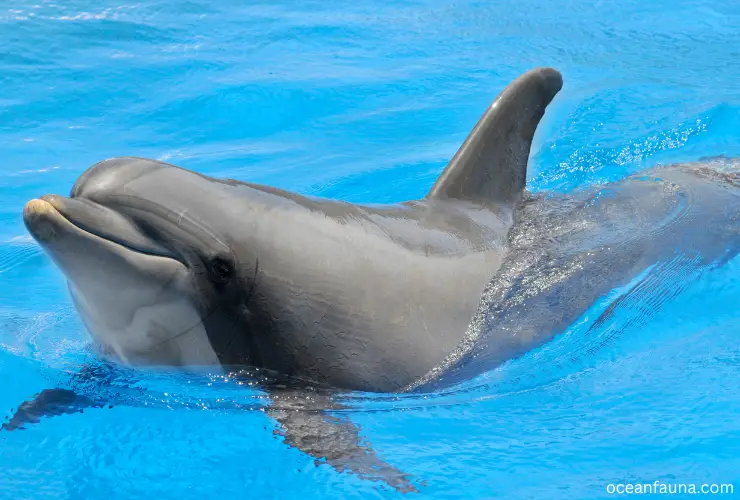
Most dolphin species prefer tropical and temperate waters as these environments fit their biological needs.
Bottlenose dolphins, for example, live in temperate and tropical waters worldwide. These waters are typically between 10° to 32°C (50° to 90° F) in temperature, which is ideal for healthy dolphin living. Anything below this range can cause stress and illness in dolphins, such as decreased immune function, impaired digestion, and reduced reproductive success.
In addition to temperature, other environmental factors are essential for dolphins to thrive. Access to suitable prey is critical, as dolphins are carnivores and require a diet high in protein and fat. They also require clean water to avoid exposure to toxins and pollutants that can harm their health.
Aside from environmental factors, dolphins also benefit from socialization opportunities in their habitat. Dolphins are highly social creatures and live in groups called pods. Socializing with others of their kind is essential for their mental and emotional well-being.
FAQs
Can dolphins live without water?
While dolphins can stay out of water for short periods, they cannot survive for long without it. As marine mammals, their bodies are adapted to live in the water and are not equipped to function on land.
When out of the water, the biggest challenge for dolphins is regulating their body temperature, as they cannot sweat like most land animals.
However, if kept wet and cool, a dolphin can survive out of the water for several hours. It is important to note that keeping a dolphin out of water for extended periods of time can lead to serious health problems and, ultimately, death.
How long can dolphins go without air?
Dolphins, being marine mammals, need to regularly surface to take in air. However, they have an incredible ability to hold their breath for extended periods of time. The maximum recorded time for a dolphin to stay underwater is around 20 minutes, although this is rare.
Typically, dolphins submerge for 8-10 minutes before surfacing to breathe. This ability is due to a number of factors, including their physiology and the way they conserve oxygen while diving.
As such, dolphins are well-adapted to life in the water and can perform amazing feats of underwater athleticism.
Conclusion
I hope this article provided you with a thorough understanding of the lifespan of dolphins. I covered the impact of various factors like environmental conditions, predation, disease, human activities, and genetics on their lifespan.
Furthermore, I elaborated on the ideal environment for their overall well-being and how long they can hold their breath underwater.
Remember that dolphins are incredibly vulnerable to human activities, and we must take measures to ensure their survival.

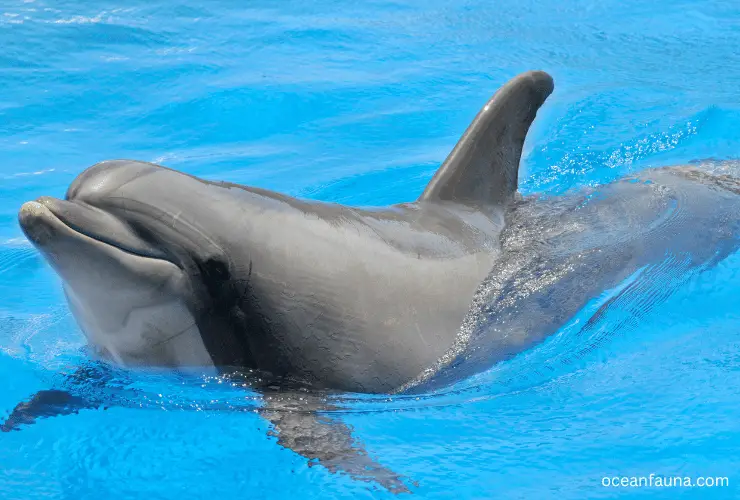
9 thoughts on “How Long Do Dolphins Live? [Lifespan & Life Cycle]”